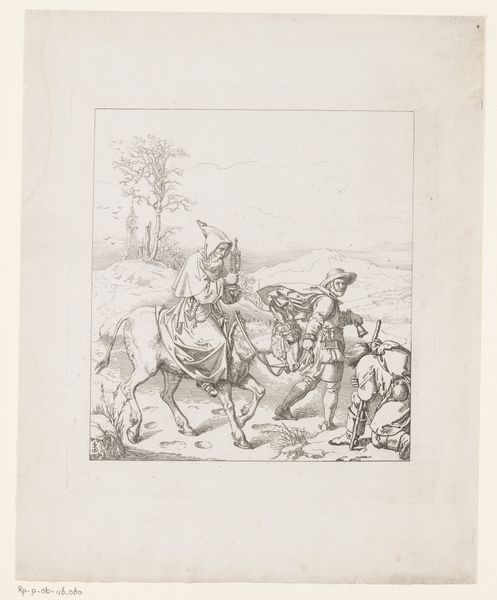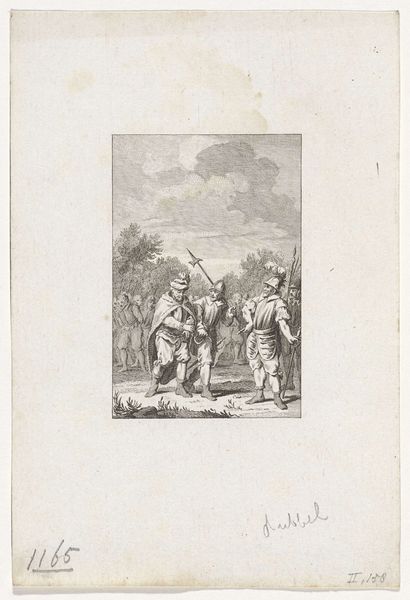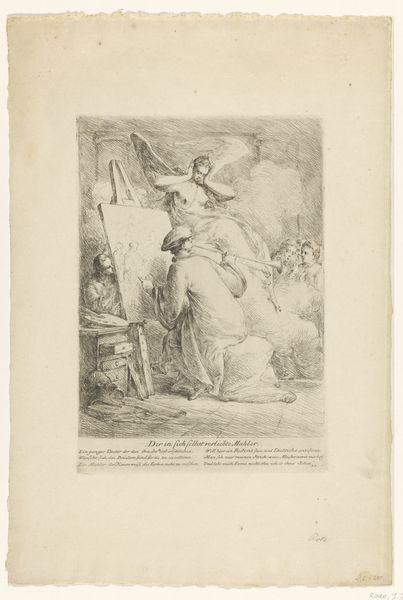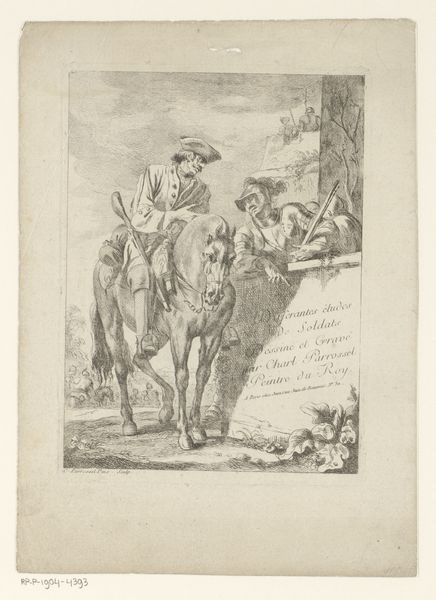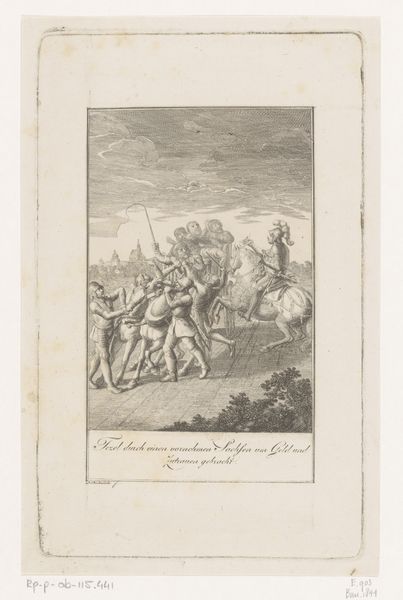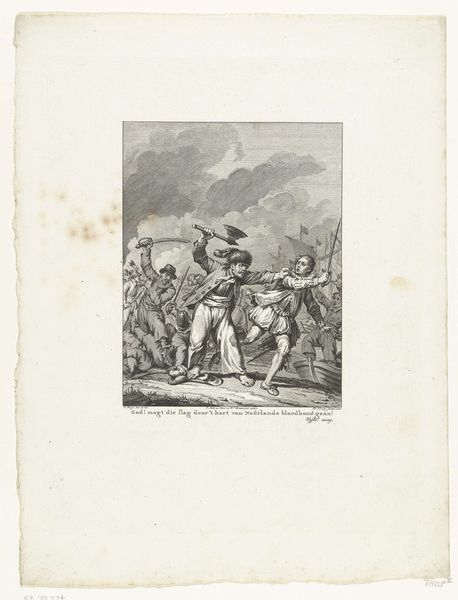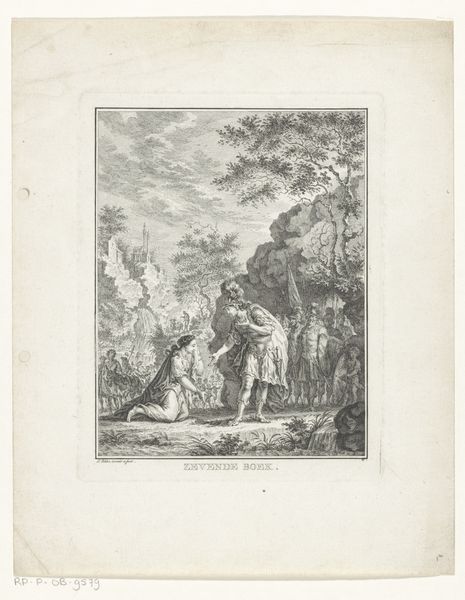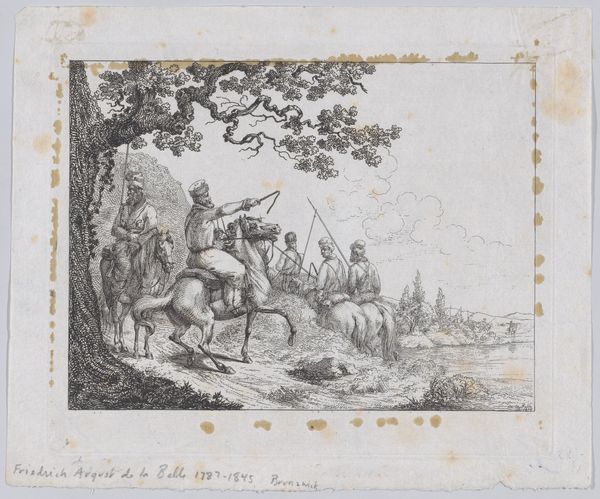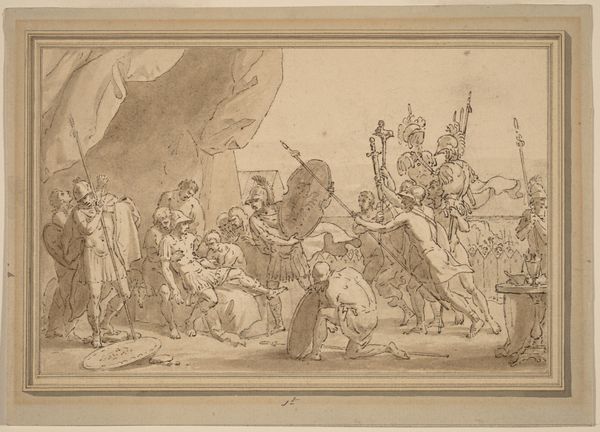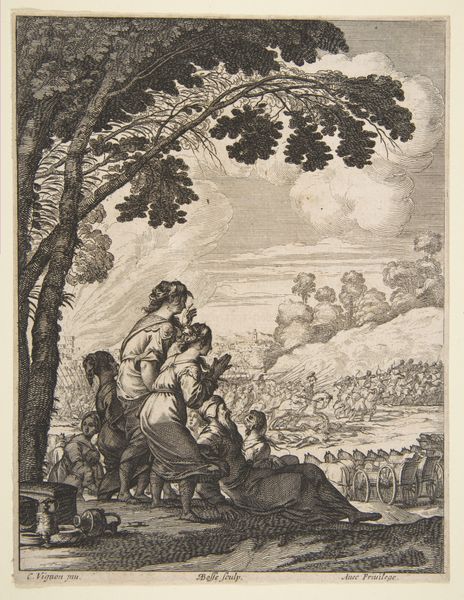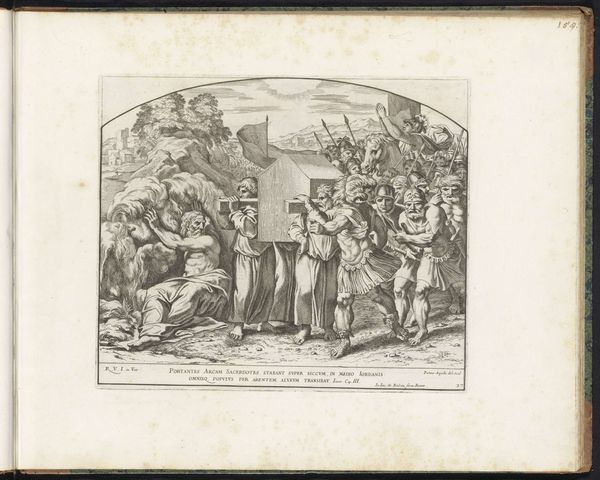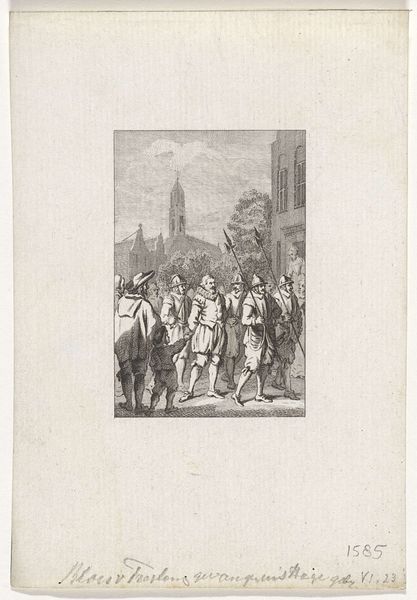
print, etching, engraving
#
neoclacissism
#
ink painting
# print
#
etching
#
landscape
#
etching
#
figuration
#
line
#
history-painting
#
engraving
Dimensions: 175 mm (height) x 110 mm (width) (plademaal)
C. Steenbloch etched "Roman Soldiers Planting Wine" around 1801, a deceptively simple scene brimming with symbolic potency. The Roman soldiers, instruments of conquest, now engage in cultivation, directed by a laurel-crowned figure on horseback. The laurel, an emblem of victory, adorns a man pointing, perhaps symbolically sowing the seeds of future triumph, not through war, but through the vine. Consider how the vine, associated with Bacchus, god of wine and ecstasy, has appeared across epochs—from ancient Dionysian rites to Christian symbolism of the Eucharist. It is a motif of transformation, of the potent fermentation that alters both grape and man. The act of planting, deeply rooted in human history, transcends mere agriculture. It speaks to our collective yearning for renewal, fertility, and legacy. We see echoes of this in ancient Egyptian depictions of pharaohs planting trees, each act a declaration of power and continuity. The image resonates with the cyclical nature of history itself, as empires rise and fall, and the symbols of power are reborn in unexpected contexts. This small etching whispers of these enduring patterns, engaging our subconscious with its potent blend of victory, intoxication, and the enduring promise of the soil.
Comments
No comments
Be the first to comment and join the conversation on the ultimate creative platform.
